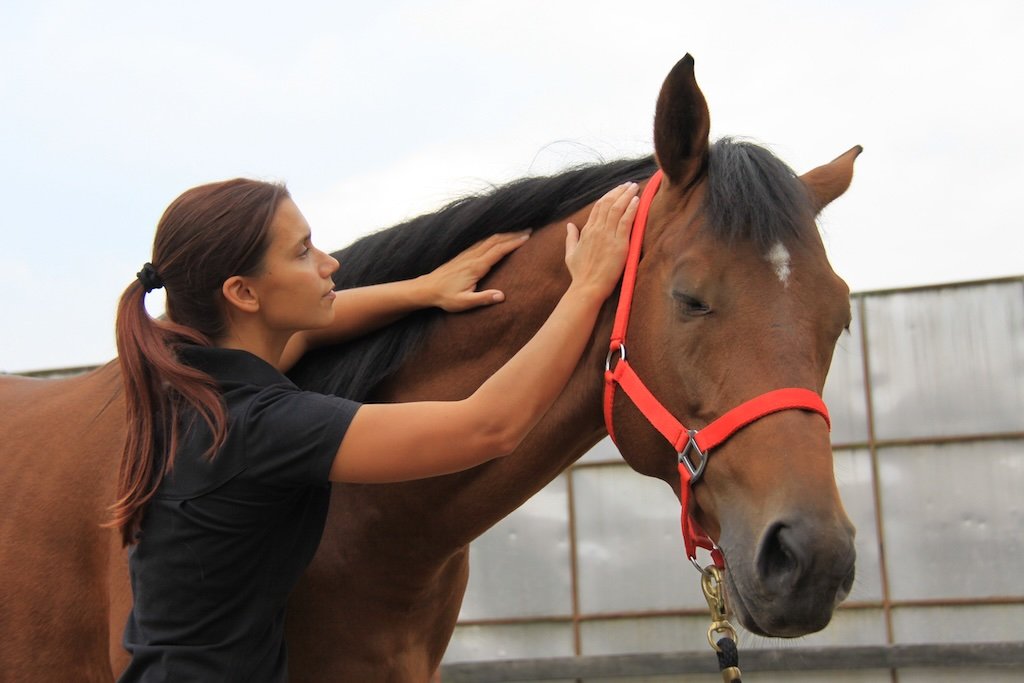Can your horse relax his neck?
We tend to carry around excess tension in our neck and shoulders. In my experience, horses do the same thing. What happens when we let that go?
Horses carry a lot of tension in their necks. Sometimes all we need to do is remind them that they don’t need to hold on to it.
Last week we played around with actively relaxing our neck and shoulders and feeling what kind of sensations that brings to our body. The excess tension we carry with us on a daily basis is so common, we don't even notice it anymore. But, when we consciously let go of it, and focus on relaxation, we feel softer, calmer and more present. The same goes for horses. Let's see what happens if we ask our horse to actively relax his neck and shoulders.
The first area where many horses carry tension is the poll. Sensitive horses that get stressed easily, or horses that spook at everything, tend to have very tense polls. Some are so tense they don't like being touched in this area at all. So, when we approach the poll, we need to be very polite. Have someone hold the horse, or hold him yourself, but don't tie him. Place the palm of your hand on the poll, underneath the halter. Don't press, don't push, don't massage. Just leave the palm there as a question – »what does your poll feel like? « Relax your shoulders, deepen your breath, stay there. If your horse moves away, let him, and try again. If he says no again, do something else. Most horses will take a minute or two before they start to really relax. You will notice their eyes becoming focused inward as they focus on the sensations in their poll. A lot of time they will lower their head, start to close their eyes and lick and chew. This is what we're after – active relaxation.
The next area we want to focus on is the base of the neck. Stand at the horse's shoulder, facing him and place one palm on each side of his lower neck, where the vertebrae are. See if you can hold one of the lower vertebrae between your hands. Then keep your hands there. Don't forget to relax your neck and shoulders. See how your horse reacts. Make sure not to squeeze or push into the vertebrae. Your hands are just resting, there asking a question. If your horse starts to relax, you can try to add a tiny bit of sideways movement, but this should be barely noticeable. You can try just by thinking about it. Intent is a powerful thing. Most horses will start to relax their head downwards and you will feel the lower muscle of the neck (the brachiocephalicus) become softer. This is what we want.
The third question is going to be a a gentle wither rock. Place your hands on the withers and keep them there until the horse relaxes. When he does, gently rock him side to side, but make sure to keep this movement very, very small. We want him to gently sway left and right, without having to tense up his muscles to stabilize. His head should be following the movement, rocking gently side to side, his lower neck muscle soft. If your horse tends to tense up if you start rocking him, just hold your hands on the withers and think about a rocking motion. Don’t forget to keep your shoulders relaxed. As soon as you tense up, your horse will too, so be mindful of what you're feeling in your body.
These three questions are a great way to activate the parasympathetic system and to teach your horse how to be mindful of sensations in his body. You can do these before or after your ride. Just make sure to pick a quiet place and time. If your horse is distracted by noises, other horses coming and going or the sound of feeding time, save this kind of work for another day.
Associated content:
Relax your neck
